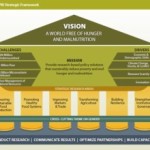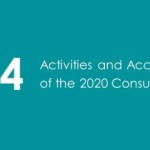By Sheri Arnott, Senior Policy Advisor Food Assistance/Food Security, Food Programming and Management Group, Sustainable Health, World Vision International
While severe food crises depicted in the media account for the most visible violations of people’s human right to food in the world, hundreds of millions more men, women and children across the globe experience a more silent ‘everyday emergency’ characterized by chronic poverty, hunger and malnutrition. The numbers are staggering: 868 million people chronically food insecure, one in four children stunted, and 100 million more children suffering from wasting.
These ‘everyday emergencies’ can be described as predictable hunger and need to be met with a predictable response. While food assistance is best known for saving lives in emergencies, short-term emergency response is a rather blunt instrument to address this chronic food and nutrition insecurity. Child-sensitive safety nets, as part of comprehensive social protection systems, are increasingly seen as valuable and effective interventions to strengthen the resilience of children, families and communities, mitigate the effects of poverty on families, strengthen families in their child care role, and enhance access to basic services for the poorest and most marginalized. Safety nets are particularly important in fragile contexts where governance is weak, public services are mostly non-existent and where the context limits the range of interventions available to build livelihoods and improve child health and education outcomes in the long term.
Safety nets can take a variety of forms, from Brazil’s celebrated Bolsa Família which grants families a monthly stipend if their children are in full-time education, to Home Grown School Feeding programs that source food from local farmers to serve free at schools. These are just two examples of how safety nets can help poor households manage hunger and malnutrition risks while boosting community incomes. There still exists, however, a significant gap in how to best support more effective safety nets systems in fragile contexts -- where they are most needed, least available and most difficult to deliver.
World Vision has had great success in leveraging food assistance safety nets to make real progress in beating hunger and building resilience for poor smallholder farmers through its use of Food for Assets to support their adoption of a simple, low-cost land regeneration system. Called Farmer Managed Natural Regeneration (FMNR), it involves the systematic regrowth and management of trees and shrubs from felled tree stumps, sprouting root systems or seeds. From humble beginnings, today over five million hectares of farmland have been re-vegetated in Niger alone, largely by direct farmer-to-farmer exchange of information about this approach. This occurred in one of the world’s poorest countries with little investment in the forestry sector by either the government or NGOs.
FMNR has not not only restored croplands, grazing lands and forests to meet further food and fibre needs, but has also transformed communities by providing more food and better nutrition for millions of people.
Today, World Vision is supporting FMNR in twelve other countries in Africa and Asia. Providing food safety nets helps farming families meet their immediate food and nutrition needs, allowing them the space and time to innovate and invest in improving farming practices, build soil health, diversify diets, and build social cohesion, and weather future shock and stressors to agriculture-based livelihoods systems.





